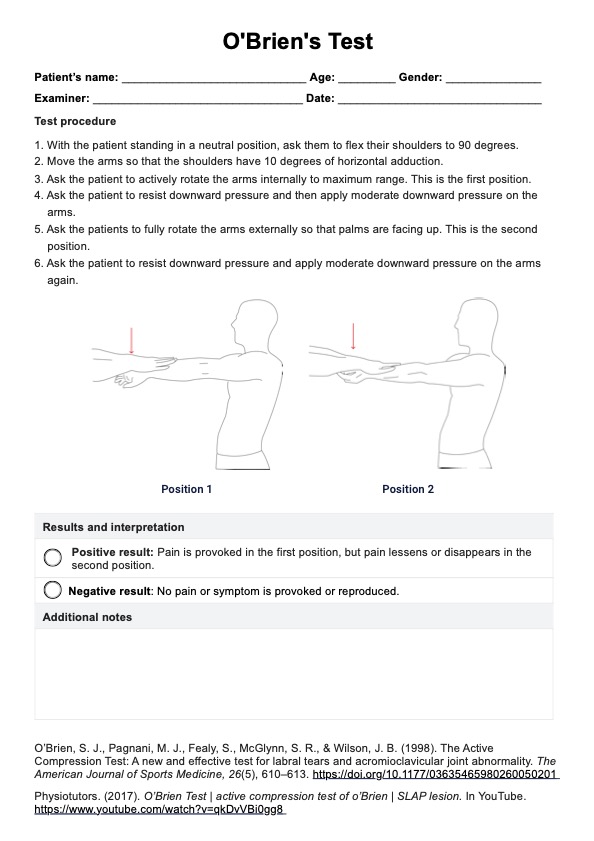To perform the test, the patient should first flex their arms to 90 degrees and internally rotate them with the thumbs pointing down. The clinician applies downward force while the patient resists. Repeat with the palms facing up.

O'Brien's Test
Learn how to do the O'Brien's active compression test to quickly screen for SLAP lesions with our handy guide and template. Read more about it here.
Use Template
O'Brien's Test Template
Commonly asked questions
A positive O'Brien's test occurs when the patient feels pain during internal rotation (thumbs down) that is relieved when the arms are externally rotated (palms up). This suggests a possible SLAP lesion.
The O’Brien needle test is a diagnostic procedure used to identify hip pathologies, not shoulder-related issues. It is distinct from the O'Brien active compression test, which is used to assess shoulder pain related to labral tears.
EHR and practice management software
Get started for free
*No credit card required
Free
$0/usd
Unlimited clients
Telehealth
1GB of storage
Client portal text
Automated billing and online payments











